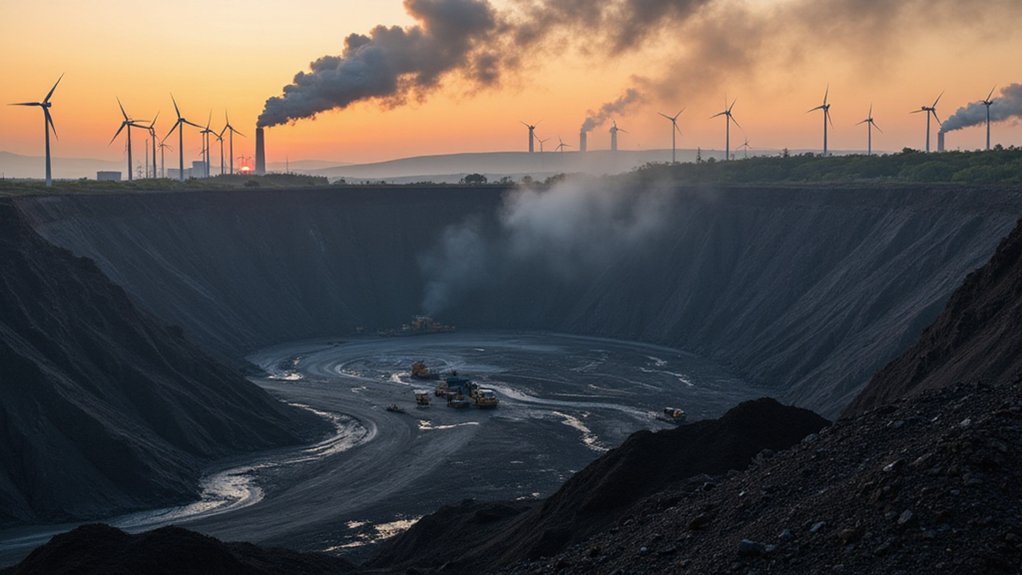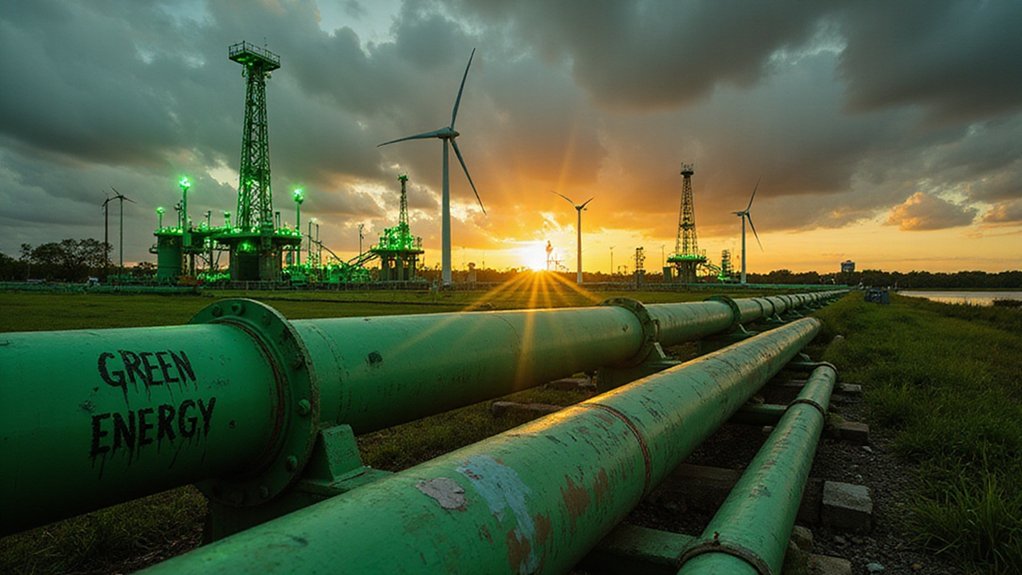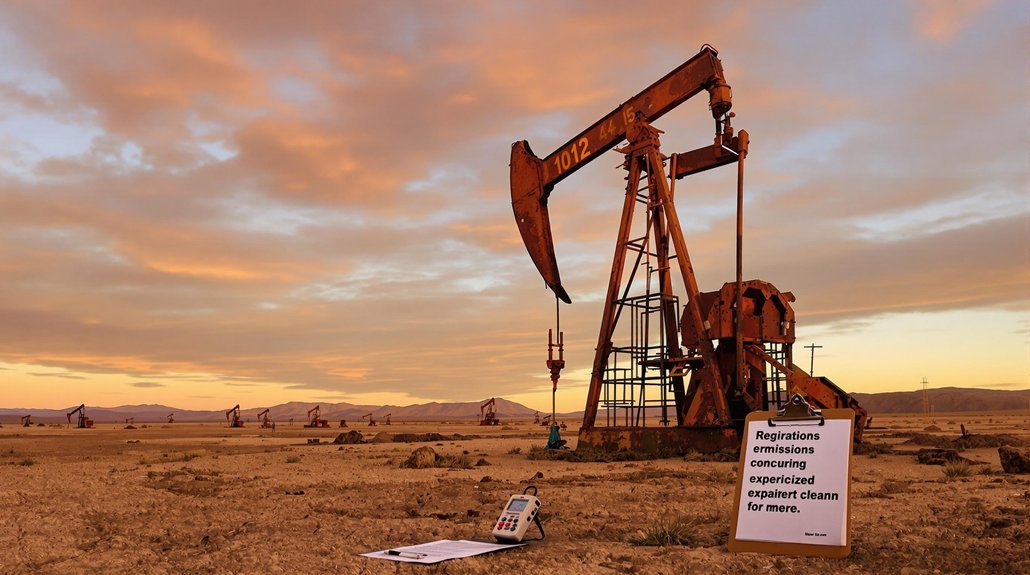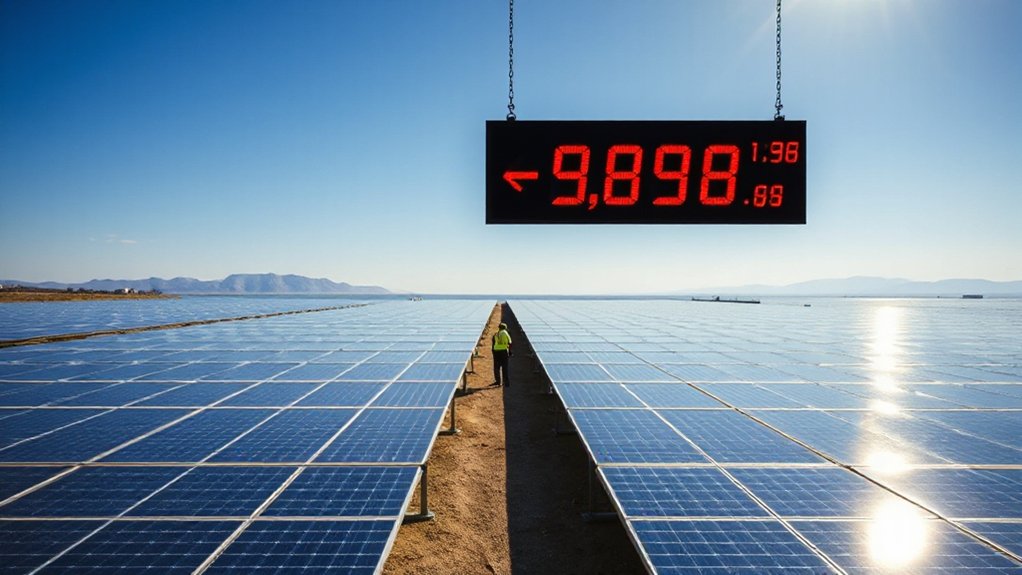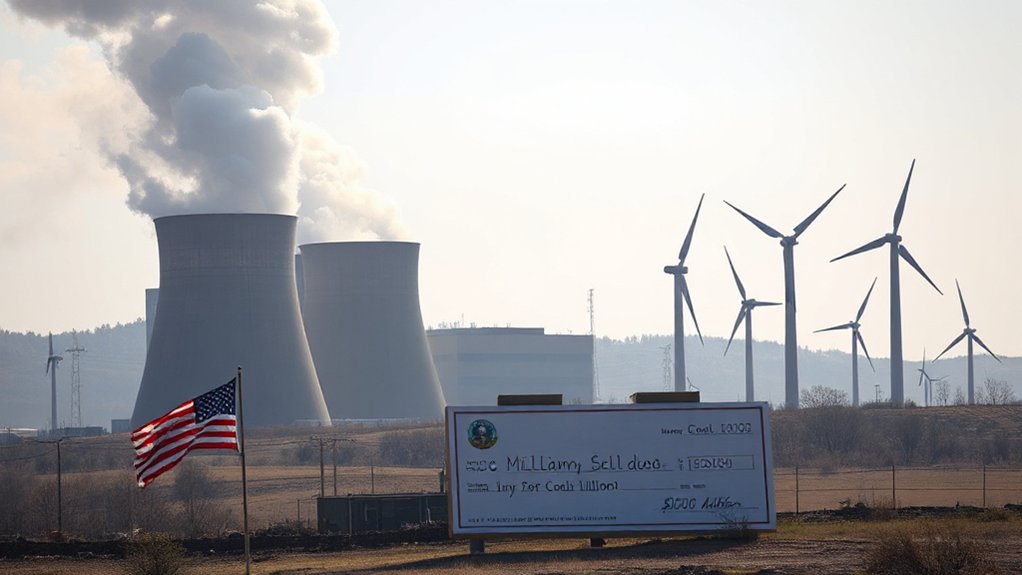The world just can’t quit coal. Despite decades of climate warnings and renewable energy promises, global coal demand actually grew by 1.2% in 2024. That’s 67 million tonnes of the dirtiest fuel imaginable, freshly added to the pile. By 2025, we’re looking at 8,928 million tons consumed globally—a 3.5% jump from 2023. So much for progress.
Despite decades of climate warnings, coal demand grew by 1.2% in 2024. So much for progress.
Coal hit a record high in 2024, generating 10,700 TWh of electricity worldwide. The culprit? Extreme temperatures that had everyone cranking up their air conditioners. Nothing says “climate solution” like burning more coal to cool ourselves from the heat coal helped create. The irony writes itself. Global coal additions reached 44.1 GW in 2024, the lowest level in 20 years.
China remains coal’s biggest cheerleader, consuming 4,589 million tons in 2024—about half the world’s total. India comes in second with 1,042 million tons, and it’s not slowing down. Southeast Asia’s coal consumption rose by almost 8%, making it the third-largest consuming region in the world. While Western nations pat themselves on the back for modest reductions, Asia keeps building. Most new coal capacity since 2015 sprouted in China, pushing global capacity to 2,175 GW.
The market’s still thriving. Coal’s value jumped 7.8% in 2024, hitting $1,663.7 billion. Production surged too—China added 40 million metric tons, India pumped out 80 million more, and Indonesia chipped in another 30 million. Meanwhile, the EU cut 35 million tons and the USA dropped 60 million. Guess which reductions got swallowed up by Asian growth?
Coal remains the world’s largest power source, though its share dipped to 35%—the lowest since 1974. Small victories, right? Except absolute consumption keeps climbing. Emerging markets need power now, not renewable promises for later. The metallurgical sector saw a tiny 0.5% decline, but industrial uses ticked up elsewhere.
Prices are expected to drop 27% in 2025, then another 5% in 2026. Don’t celebrate yet. Asian demand keeps the market humming along just fine. The USA managed a 5.1% drop in coal emissions, shifting to cleaner sources. Unlike renewable energy sources, which operate with minimal pollution, coal continues to account for a significant portion of global emissions. But globally? Coal’s grip remains frustratingly firm. The dirtiest fuel refuses to die because the world’s biggest economies refuse to let it.
References
- https://www.iea.org/reports/global-energy-review-2025/coal
- https://globalenergymonitor.org/report/boom-and-bust-coal-2025/
- https://blogs.worldbank.org/en/opendata/weakening-demand–steady-supply–what-s-driving-coal-s-decline-i
- https://www.statista.com/statistics/1303005/monthly-coal-price-index-worldwide/
- https://www.miningfrontier.com/market-reports/world-coal-market-consumption-details-and-forecast/
